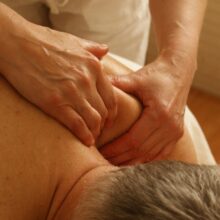Osteoporosis
Osteoporosis is a medical condition characterized by weakened bones that are more susceptible to fractures. The term “osteoporosis” literally means “porous bones.” This condition occurs when the creation of new bone doesn’t keep up with the removal of old bone, leading to decreased bone density and mass.
Causes and Risk Factors
Several factors contribute to the development of osteoporosis:
Age: Bone density naturally decreases as people age, making older adults more vulnerable.
Gender: Women, particularly postmenopausal women, are at higher risk due to the drop in estrogen levels, which is essential for bone health.
Genetics: A family history of osteoporosis can increase risk.
Lifestyle: Lack of physical activity, smoking, excessive alcohol consumption, and poor nutrition (especially low calcium and vitamin D intake) can contribute to bone loss.
Medical Conditions: Conditions such as rheumatoid arthritis, hormonal imbalances, and certain medications can increase the risk of developing osteoporosis.
Symptoms
Osteoporosis is often called a “silent disease” because it progresses without obvious symptoms until a fracture occurs. Common fracture sites include the hip, spine, and wrist. Vertebral fractures can lead to back pain, loss of height, and a stooped posture.
Diagnosis and Treatment
Osteoporosis is diagnosed through bone density tests, such as dual-energy X-ray absorptiometry (DEXA or DXA) scans, which measure bone mineral density.
Treatment focuses on slowing bone loss and preventing fractures. It includes:
Medications: Bisphosphonates, hormone replacement therapy, and other drugs can help strengthen bones.
Diet: Ensuring adequate intake of calcium and vitamin D is crucial.
Exercise: Weight-bearing and muscle-strengthening exercises help maintain bone density.
Lifestyle Changes: Quitting smoking and reducing alcohol intake are essential for bone health.
Preventing osteoporosis involves a combination of a healthy diet, regular exercise, and lifestyle modifications to maintain strong and healthy bones throughout life.


